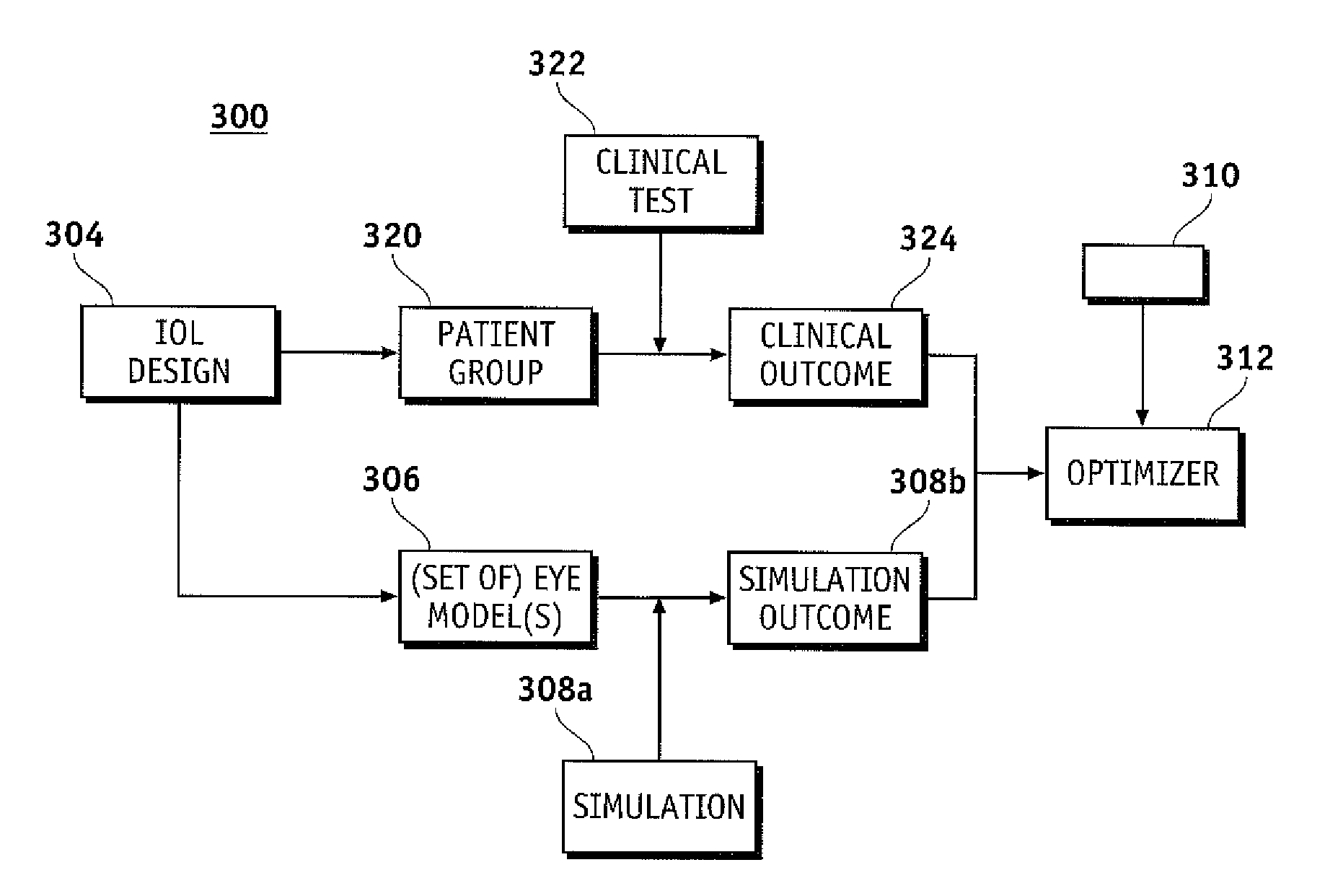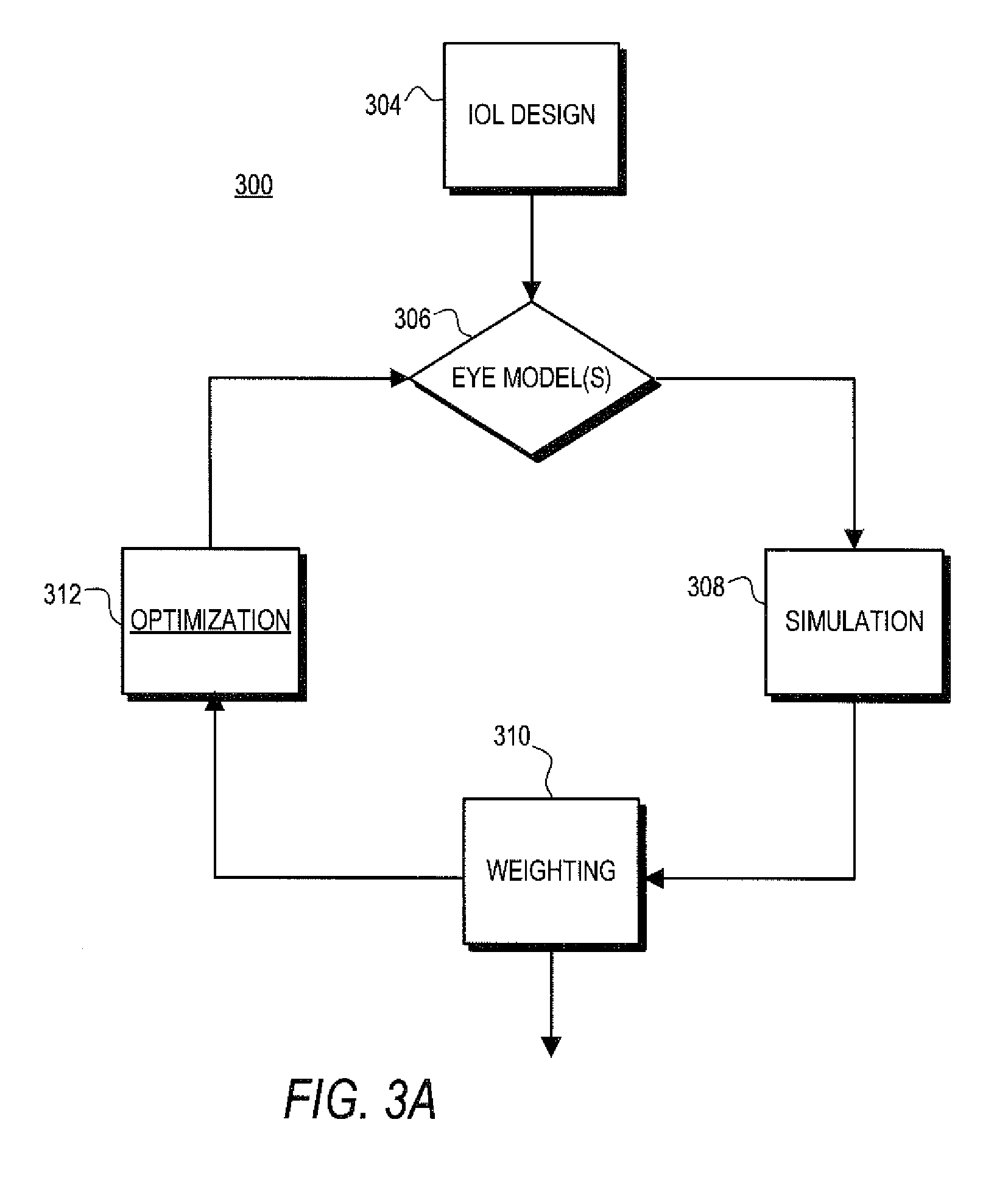Apparatus, system and method for predictive modeling to design, evaluate and optimize ophthalmic lenses
a technology of predictive modeling and eyewear, applied in the field of eyewear design, can solve the problems of inability to predict the va and other vision factors of the eyewear, the alternative method of preclinical testing ophthalmic lenses, and the inability to model the visual acuity (va) of the eyewear, etc., to achieve the effect of only limited predictability of va and other vision factors, and not easy to achiev
- Summary
- Abstract
- Description
- Claims
- Application Information
AI Technical Summary
Benefits of technology
Problems solved by technology
Method used
Image
Examples
Embodiment Construction
[0034]It is to be understood that the figures and descriptions of the present invention have been simplified to illustrate elements that are relevant for a clear understanding of the present invention, while eliminating, for the purposes of clarity, many other elements found in typical optical and optical simulation apparatuses, systems and methods. Those of ordinary skill in the art will recognize that other elements are desirable and / or required in order to implement the present invention. However, because such elements are well known in the art, and because they do not facilitate a better understanding of the present invention, a discussion of such elements is not provided herein.
[0035]The apparatus, system and method of the present invention may be predictive as to the performance of ophthalmic lenses, such as IOLs, in the eye under any of a variety of circumstances, and with respect to any of a variety of ocular conditions and eye types, and may provide for improved performance...
PUM
 Login to View More
Login to View More Abstract
Description
Claims
Application Information
 Login to View More
Login to View More - R&D
- Intellectual Property
- Life Sciences
- Materials
- Tech Scout
- Unparalleled Data Quality
- Higher Quality Content
- 60% Fewer Hallucinations
Browse by: Latest US Patents, China's latest patents, Technical Efficacy Thesaurus, Application Domain, Technology Topic, Popular Technical Reports.
© 2025 PatSnap. All rights reserved.Legal|Privacy policy|Modern Slavery Act Transparency Statement|Sitemap|About US| Contact US: help@patsnap.com



